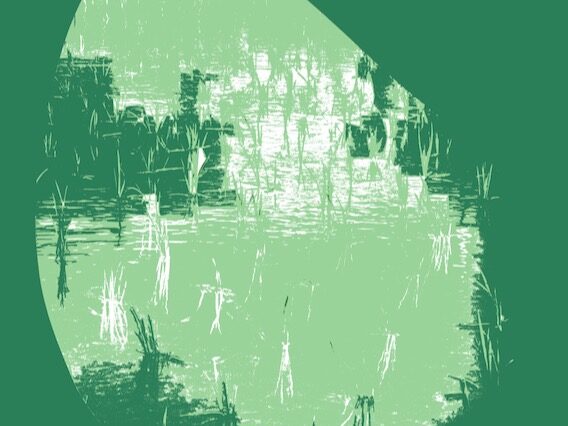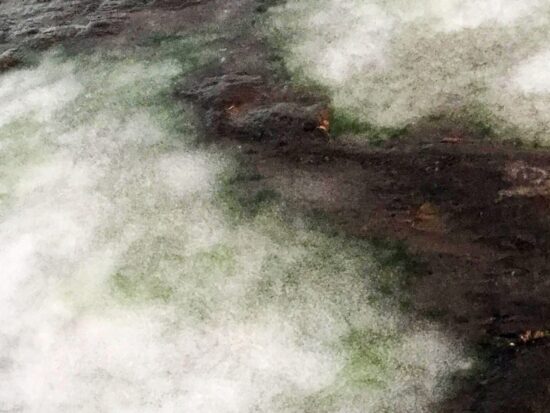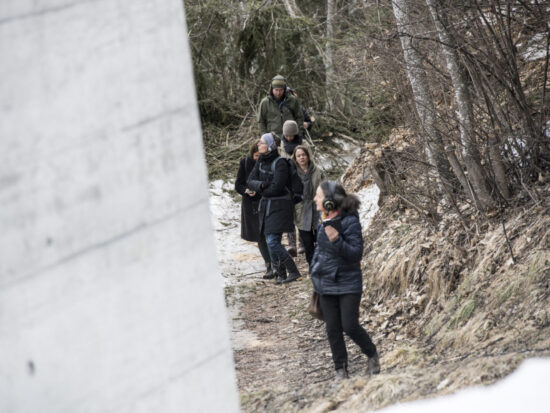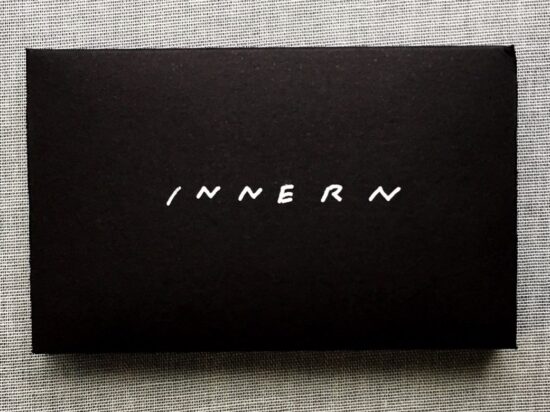‘Grass Eater Diary‘ is inspired by the Japanese idiom ‘Michikusa Wo Kuu’ the origin of which is: a horse eats grass on the way to a destination and wastes its time. The grass-eater forgets about purpose, time and goals and just ambles around, observing, smelling, thinking–consciously or unconsciously. The green, juicy grass is an image for pleasure and contemplation, a state of luxury in a childhood mind.
This state is neither wanted nor needed in capitalist societies and already suppressed in childhood by negative idioms to make clear that one needs goals and time is money. In ‘Grass Eater Diary’, artists Tomoko Hojo + Rahel Kraft have transformed the image of the eating horse which is constantly moving or pausing at a very slow speed into a sound walk on headphones. You can experience stillness and movement at the same time to tune into your surroundings and make fresh connections.
This piece was originally made for the 2019 Nakanojo Biennnale in the Japanese town of Nakanojo, where the entire creation process took place. The piece is influenced and characterized by this environment. The sound walk begins near a foot bath and continues to a playground with benches under a green canopy, then down the stairs to a river path and a rice field with a small hut that serves only to shelter the resting people. The temporary artist studio was in one of the many primary schools that were closed due to the depopulation of this rural mountain area.
Many of the instrumental sounds come from an abandoned music room, where everything still was in place as if lessons would start the next day. Hojo and Kraft also held a workshop to record the local festival song ‘Tori Oi’ (means keep birds away), which became one of the central motifs of the composition.
「道草日記」は、「道草を食う」という日本の慣用句から着想を得て制作された。道草をする人は、目的も時間も目標も忘れて、ただ歩き回り、観察し、匂いを嗅ぎ、無意識のうちに考えている。青々とした草は、快楽や思索のためのイメージであり、子供の頃の贅沢な状態である。このような状態は資本主義社会では望まれないし、必要とされない。人には目標が必要だ、時は金なり、といった否定的な言い回しによって子供の頃からすでに抑圧されている。Hojo+Kraftは、「草食日記」において、非常にゆっくりとしたスピードで絶えず動いたり止まったりしながら草を食べる(道草をする)馬のイメージを、ヘッドホンを使ったオーディオウォークに置き換えた。静と動を同時に体験することで、周囲の環境に同調し、新鮮なつながりを得ることが可能になる。
この作品はもともと、群馬県中之条町で開催の「中之条ビエンナーレ2019」のために作られ、制作の全ては現地でおこなわれた。オーディオウォークは足湯の近くから始まり、緑の天蓋の下にベンチがある遊び場、そして階段を下りて川沿いの道、休んでいる人を保護するためだけの小さな小屋のある田んぼへと続く。制作中のスタジオは山間部の過疎化によって閉鎖された多くの小学校のうちのひとつを利用した。
楽器の多くは、廃墟と化した音楽室から持ち出したものだ。そこには、まるで翌日から授業が始まるかのように、まだすべてが整っていた。また、Hojo+Kraftは、この地域の祭り歌である「鳥追い」を録音するワークショップを行い、この歌が作曲の中心的なモチーフのひとつとなった。



